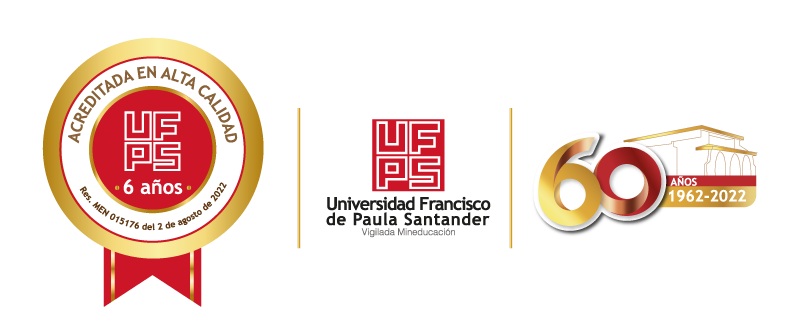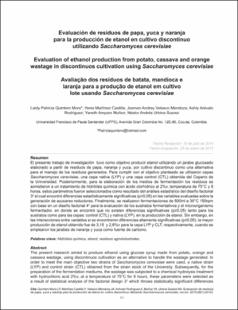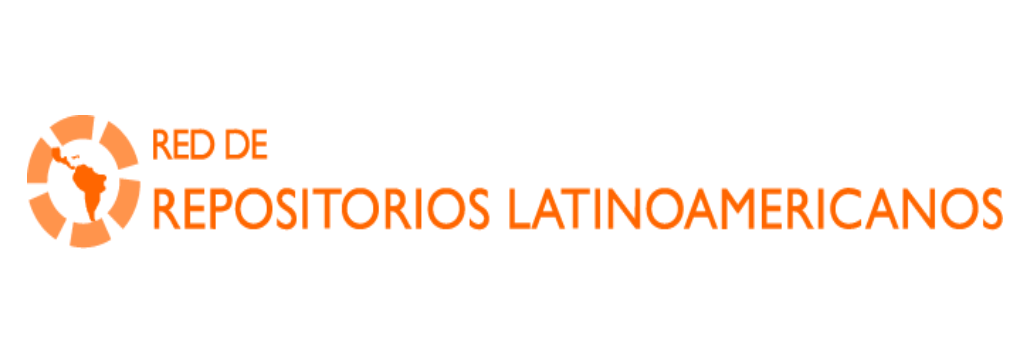Evaluación de residuos de papa, yuca y naranja para la producción de etanol en cultivo discontinuo utilizando Saccharomyces cerevisiae
Artículo de revista
2015-01-25
Revista ION
Bucaramanga,Colombia
El presente trabajo de investigación tuvo como objetivo producir etanol utilizando un jarabe glucosado elaborado a partir de residuos de papa, naranja y yuca, por cultivo discontinuo como una alternativa para el manejo de los residuos generados. Para cumplir con el objetivo planteado se utilizaron cepas Saccharomyces cerevisiae, una cepa nativa (LYP) y una cepa control (CTL) obtenida del Cepario de la Universidad. Posteriormente, para la elaboración de los medios de fermentación los residuos se sometieron a un tratamiento de hidrólisis química con ácido clorhídrico al 2%v, temperatura de 75°C y 8 horas, estos parámetros fueron seleccionados como resultado del análisis estadístico del diseño factorial 33 el cual encontró diferencias estadísticamente significativas (p≥0,05) en las variables evaluadas sobre la generación de azucares reductores. Finalmente, se realizaron fermentaciones de 500ml a 30°C 150rpm con base en un diseño factorial 42 para la evaluación de los sustratos fermentativos y el microorganismo fermentador, en donde se encontró que no existen diferencias significativas (p≥0,05) tanto para los sustratos como para las cepas: control (CTL) y nativa (LYP), en la producción de etanol. Sin embargo, en las interacciones entre variables si se encontraron diferencias altamente significativas (p≤0,05), la mayor producción de etanol obtenido fue de 3,15 y 2,6%v para la cepa LYP y CLT, respectivamente, cuando se emplearon los jarabes de naranja y yuca como fuente de carbono. The present research aimed to produce ethanol using glucose syrup made from potato, orange and cassava wastage, using discontinuos cultivation as an alternative to handle the wastage generated. In order to meet the main objective two strains of Saccharomyces cerevisiae were used, a native strain (LYP) and control strain (CTL) obtained from the strain stock of the University. Subsequently, for the preparation of the fermentation mediums, the wastage was subjected to a chemical hydrolysis treatment with hydrochloric acid 2%v, at a temperature of 75°C for 8 hours, these parameters were selected as a result of statistical analysis of the factorial design 33 which throws statistically significant differences (p≥0.05) in the variables evaluated on the generation of reducing sugars. Finally, 500ml fermentations were performed at 30°C, 150rpm based in a factorial design 42 in order to evaluate the fermentative substrates and fermenting microorganism, where no significant differences were found (p≥0.05), for both substrates and strains: (CTL) and (LYP), in ethanol production. However, regarding the interactions between the variables, some highly significant differences were found (p≤0.05), the highest production of ethanol obtained was 3.15 and 2.6% for strains LYP and CLT respectively, when they used the orange syrup and cassava as carbon source.
- Ambiente y Vida - GIAV [131]
Descripción:
Evaluación de residuos de papa, yuca y naranja.pdf
Título: Evaluación de residuos de papa, yuca y naranja.pdf
Tamaño: 1.734Mb
 PDF
PDF
 LEER EN FLIP
LEER EN FLIP
Título: Evaluación de residuos de papa, yuca y naranja.pdf
Tamaño: 1.734Mb
 PDF
PDF
 LEER EN FLIP
LEER EN FLIP
















